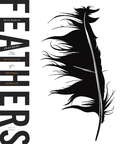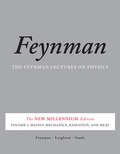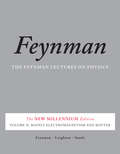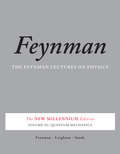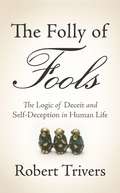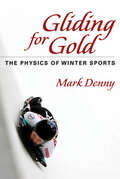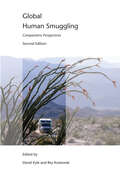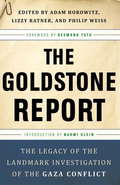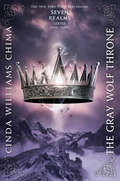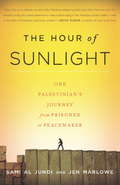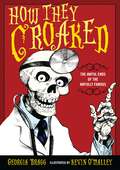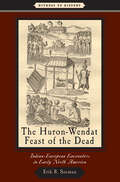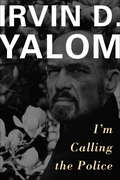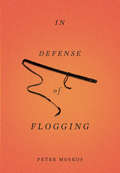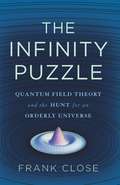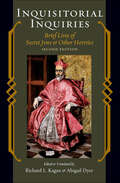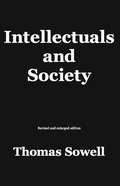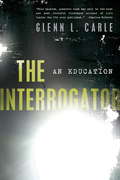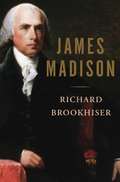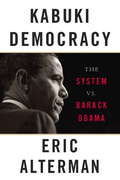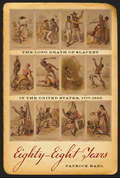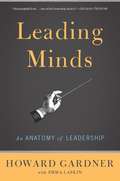- Table View
- List View
Feathers: The Evolution of a Natural Miracle
by Thor HansonAs seen on PBS's American Spring Live, one of America's great nature-writers explores the magic and science of feathers Feathers are an evolutionary marvel: aerodynamic, insulating, beguiling. They date back more than 100 million years. Yet their story has never been fully told. In Feathers, biologist Thor Hanson details a sweeping natural history, as feathers have been used to fly, protect, attract, and adorn through time and place. Applying the research of paleontologists, ornithologists, biologists, engineers, and even art historians, Hanson asks: What are feathers? How did they evolve? What do they mean to us? Engineers call feathers the most efficient insulating material ever discovered, and they are at the root of biology's most enduring debate. They silence the flight of owls and keep penguins dry below the ice. They have decorated queens, jesters, and priests. And they have inked documents from the Constitution to the novels of Jane Austen.Feathers is a captivating and beautiful exploration of this most enchanting object.
The Feynman Lectures on Physics, Vol. I: The New Millennium Edition: Mainly Mechanics, Radiation, and Heat (World Student Ser.)
by Matthew Sands Robert B. Leighton Richard P. Feynman"The whole thing was basically an experiment," Richard Feynman said late in his career, looking back on the origins of his lectures. The experiment turned out to be hugely successful, spawning publications that have remained definitive and introductory to physics for decades. Ranging from the basic principles of Newtonian physics through such formidable theories as general relativity and quantum mechanics, Feynman's lectures stand as a monument of clear exposition and deep insight. Timeless and collectible, the lectures are essential reading, not just for students of physics but for anyone seeking an introduction to the field from the inimitable Feynman.
The Feynman Lectures on Physics, Vol. II: The New Millennium Edition: Mainly Electromagnetism and Matter
by Richard P. Feynman Robert B. Leighton Matthew Sands"The whole thing was basically an experiment," Richard Feynman said late in his career, looking back on the origins of his lectures. The experiment turned out to be hugely successful, spawning publications that have remained definitive and introductory to physics for decades. Ranging from the basic principles of Newtonian physics through such formidable theories as general relativity and quantum mechanics, Feynman's lectures stand as a monument of clear exposition and deep insight.Timeless and collectible, the lectures are essential reading, not just for students of physics but for anyone seeking an introduction to the field from the inimitable Feynman.
The Feynman Lectures on Physics, Vol. III: The New Millennium Edition: Quantum Mechanics
by Matthew Sands Robert B. Leighton Richard P. Feynman"The whole thing was basically an experiment," Richard Feynman said late in his career, looking back on the origins of his lectures. The experiment turned out to be hugely successful, spawning publications that have remained definitive and introductory to physics for decades. Ranging from the basic principles of Newtonian physics through such formidable theories as general relativity and quantum mechanics, Feynman's lectures stand as a monument of clear exposition and deep insight. Timeless and collectible, the lectures are essential reading, not just for students of physics but for anyone seeking an introduction to the field from the inimitable Feynman.
The Folly of Fools: The Logic of Deceit and Self-Deception in Human Life
by Robert TriversA New York Times Notable Book of 2012Whether it&’s in a cockpit at takeoff or the planning of an offensive war, a romantic relationship or a dispute at the office, there are many opportunities to lie and self-deceive—but deceit and self-deception carry the costs of being alienated from reality and can lead to disaster. So why does deception play such a prominent role in our everyday lives? In short, why do we deceive?In his bold new work, prominent biological theorist Robert Trivers unflinchingly argues that self-deception evolved in the service of deceit—the better to fool others. We do it for biological reasons—in order to help us survive and procreate. From viruses mimicking host behavior to humans misremembering (sometimes intentionally) the details of a quarrel, science has proven that the deceptive one can always outwit the masses. But we undertake this deception at our own peril.Trivers has written an ambitious investigation into the evolutionary logic of lying and the costs of leaving it unchecked.
Gliding for Gold: The Physics of Winter Sports
by Mark DennyAs anyone from cold climates knows, living with lots of ice and snow can lead to a special appreciation of sports such as skiing, sledding, and skating. Prolific physics popularizer Mark Denny’s take on winter athletics lays out the physical principles that govern glaciated game play.After discussing the physical properties of ice and snow and describing the physics behind sliding friction and aerodynamic drag, Denny applies these concepts to such sports as bobsledding, snowboarding, and curling. He explains why clap skates would only hinder hockey players, how a curling rock curls, the forces that control luge speed, and how steering differs from skiing to snowboarding. With characteristic accuracy and a touch of wit, Denny provides fans, competitors, and coaches with handy, applicable insights into the games they love. The separate section of technical notes offers an original and mathematically rigorous exploration of the key aspects of winter sports physics. A physics-driven exploration of sports played on ice and snow that is truly fun and informative, Gliding for Gold is the perfect primer for understanding the science behind cold weather athletics.
Gliding for Gold: The Physics of Winter Sports
by Mark DennyAs anyone from cold climates knows, living with lots of ice and snow can lead to a special appreciation of sports such as skiing, sledding, and skating. Prolific physics popularizer Mark Denny’s take on winter athletics lays out the physical principles that govern glaciated game play.After discussing the physical properties of ice and snow and describing the physics behind sliding friction and aerodynamic drag, Denny applies these concepts to such sports as bobsledding, snowboarding, and curling. He explains why clap skates would only hinder hockey players, how a curling rock curls, the forces that control luge speed, and how steering differs from skiing to snowboarding. With characteristic accuracy and a touch of wit, Denny provides fans, competitors, and coaches with handy, applicable insights into the games they love. The separate section of technical notes offers an original and mathematically rigorous exploration of the key aspects of winter sports physics. A physics-driven exploration of sports played on ice and snow that is truly fun and informative, Gliding for Gold is the perfect primer for understanding the science behind cold weather athletics.
Global Human Smuggling: Comparative Perspectives
by David Kyle Rey KoslowskiTen years ago the topic of human smuggling and trafficking was relatively new for academic researchers, though the practice itself is very old. Since the first edition of this volume was published, much has changed globally, directly impacting the phenomenon of human smuggling. Migrant smuggling and human trafficking are now more entrenched than ever in many regions, with efforts to combat them both largely unsuccessful and often counterproductive. This book explores human smuggling in several forms and regions, globally examining its deep historic, social, economic, and cultural roots and its broad political consequences.Contributors to the updated and expanded edition consider the trends and events of the past several years, especially in light of developments after 9/11 and the creation of the U.S. Department of Homeland Security. They also reflect on the moral economy of human smuggling and trafficking, the increasing percentage of the world's asylum seekers who escape political violence only by being smuggled, and the implications of human smuggling in a warming world.
The Goldstone Report: The Legacy of the Landmark Investigation of the Gaza Conflict
by Philip Weiss Adam Horowitz Lizzy Ratner editorsThe Goldstone Report is one of the most controversial UN reports ever published. It alleges that both Israel and Hamas committed atrocities when Israel invaded Gaza in January 2009 as a part of Operation Cast Lead. Justice Richard Goldstone, a celebrated South African and Jewish human rights lawyer, oversaw the UN fact-finding mission after the invasion. What Goldstone found, and later published, caused a maelstrom within Israel and the international community at large. Goldstone was demonized by many who claimed bias, intimating the report unfairly vilified Israel. Though the findings are of enormous historical, political and moral significance, few have actually read the document in its entirety—thus the furious political debate that mushroomed in the wake of its publication has supplanted any true understanding of the report&’s discoveries. The Goldstone Report: The Landmark Investigation of the Gaza Conflict of 2008-2009 will change this. Edited by three progressive American Jews, Adam Horowitz, Lizzy Ratner and Philip Weiss, The Goldstone Report is an edited and annotated edition of the report that contains analysis, original essays and a context for the debate.
The Gray Wolf Throne: Collecting The Demon King, The Exiled Queen, The Gray Wolf Throne, And The Crimson Crown (A Seven Realms Novel #3)
by Cinda Williams ChimaAn epic tale of fierce loyalty, unbearable sacrifice, and the heartless hand of fate.Han Alister thought he had already lost everyone he loved. But when he finds his friend Rebecca Morley near death in the Spirit Mountains, Han knows that nothing matters more than saving her. The costs of his efforts are steep, but nothing can prepare him for what he soon discovers: the beautiful, mysterious girl he knew as Rebecca is none other than Raisa ana'Marianna, heir to the Queendom of the Fells. Han is hurt and betrayed. He knows he has no future with a blueblood. And, as far as he's concerned, the princess's family as good as killed his own mother and sister. But if Han is to fulfill his end of an old bargain, he must do everything in his power to see Raisa crowned queen.Meanwhile, some people will stop at nothing to prevent Raisa from ascending. With each attempt on her life, she wonders how long it will be before her enemies succeed. Her heart tells her that the thief-turned-wizard Han Alister can be trusted. She wants to believe it-he's saved her life more than once. But with danger coming at her from every direction, Raisa can only rely on her wits and her iron-hard will to survive-and even that might not be enough.
The Hour of Sunlight: One Palestinian's Journey from Prisoner to Peacemaker
by Sami al Jundi Jen MarloweAs a teenager in Palestine, Sami al Jundi had one ambition: overthrowing Israeli occupation. With two friends, he began to build a bomb to use against the police. But when it exploded prematurely, killing one of his friends, al Jundi was caught and sentenced to ten years in prison. It was in an Israeli jail that his unlikely transformation began. Al Jundi was welcomed into a highly organized, democratic community of political prisoners who required that members of their cell read, engage in political discourse on topics ranging from global revolutions to the precepts of nonviolent protest and revolution.Al Jundi left prison still determined to fight for his people's rights-but with a very different notion of how to undertake that struggle. He cofounded the Middle East program of Seeds of Peace Center for Coexistence, which brings together Palestinian and Israeli youth.Marked by honesty and compassion for Palestinians and Israelis alike, The Hour of Sunlight illuminates the Palestinian experience through the story of one man's struggle for peace.
The Hour of Sunlight: One Palestinian's Journey from Prisoner to Peacemaker
by Sami al Jundi Jen MarloweAs a teenager in Palestine, Sami al Jundi had one ambition: overthrowing Israeli occupation. With two friends, he began to build a bomb to use against the police. But when it exploded prematurely, killing one of his friends, al Jundi was caught and sentenced to ten years in prison. It was in an Israeli jail that his unlikely transformation began. Al Jundi was welcomed into a highly organized, democratic community of political prisoners who required that members of their cell read, engage in political discourse on topics ranging from global revolutions to the precepts of nonviolent protest and revolution. Al Jundi left prison still determined to fight for his people's rights -- but with a very different notion of how to undertake that struggle. He cofounded the Middle East program of Seeds of Peace Center for Coexistence, which brings together Palestinian and Israeli youth. Marked by honesty and compassion for Palestinians and Israelis alike, The Hour of Sunlight illuminates the Palestinian experience through the story of one man's struggle for peace.
How They Croaked: The Awful Ends of the Awfully Famous
by Georgia BraggThis award-winning book for reluctant readers is a fascinating collection of remarkable deaths--and not for the faint of heart.Over the course of history, men and women have lived and died. In fact, getting sick and dying can be a big, ugly mess--especially before the modern medical care that we all enjoy today. From King Tut's ancient autopsy to Albert Einstein's great brain escape, How They Croaked contains all the gory details of the awful ends of nineteen awfully famous people.Don't miss the companion, How They Choked!
The Huron-Wendat Feast of the Dead: Indian-European Encounters in Early North America (Witness to History)
by Erik R. Seeman"Two thousand Wendat (Huron) Indians stood on the edge of an enormous burial pit... they held in their arms the bones of roughly seven hundred deceased friends and family members. The Wendats had lovingly scraped and cleaned the bones of the corpses that had decomposed on the scaffolds. They awaited only the signal from the master of the ritual to place the bones in the pit. This was the great Feast of the Dead."Witnesses to these Wendat burial rituals were European colonists, French Jesuit missionaries in particular. Rather than being horrified by these unfamiliar native practices, Europeans recognized the parallels between them and their own understanding of death and human remains. Both groups believed that deceased souls traveled to the afterlife; both believed that elaborate mortuary rituals ensured the safe transit of the soul to the supernatural realm; and both believed in the power of human bones.Appreciating each other’s funerary practices allowed the Wendats and French colonists to find common ground where there seemingly would be none. Erik R. Seeman analyzes these encounters, using the Feast of the Dead as a metaphor for broader Indian-European relations in North America. His compelling narrative gives undergraduate students of early America and the Atlantic World a revealing glimpse into this fascinating—and surprising—meeting of cultures.
I'm Calling the Police
by Irvin D. Yalom"Something heavy is going on ... the past is erupting ... my two lives, night and day, are joining. I need to talk." Irv Yalom's old medical school friend was making a plea for help. In their fifty years of friendship, Bob Berger had never divulged his nocturnal terrors to his close comrade. Now, finally, he found himself forced to.In I'm Calling the Police, Berger recounts to Yalom the anguish of a war-torn past: By pretending he was a Christian, Berger survived the Holocaust. But after a life defined by expiation and repression, a dangerous encounter has jarred loose the painful memory of those years. Together, they interpret the fragments of the horrific past that haunt his dreams.I'm Calling the Police is a powerful exploration of Yalom's most vital themes--memory, fear, love, and healing--and a glimpse into the life of the man himself.
In Defense of Flogging
by Peter MoskosPrisons impose tremendous costs, yet they're easily ignored. Criminals-- even low-level nonviolent offenders-- enter our dysfunctional criminal justice system and disappear into a morass that's safely hidden from public view. Our "tough on crime" political rhetoric offers us no way out, and prison reformers are too quickly dismissed as soft on criminals. Meanwhile, the taxpayer picks up the extraordinary and unnecessary bill.In Defense of Flogging presents a solution both radical and simple: give criminals a choice between incarceration and the lash. Flogging is punishment: quick, cheap, and honest.Noted criminologist Peter Moskos, in irrefutable style, shows the logic of the new system while highlighting flaws in the status quo. Flogging may be cruel, but In Defense of Flogging shows us that compared to our broken prison system, it is the lesser of two evils.
The Infinity Puzzle: Quantum Field Theory and the Hunt for an Orderly Universe
by Frank CloseSpeculation is rife that by 2012 the elusive Higgs boson will be found at the Large Hadron Collider. If found, the Higgs boson would help explain why everything has mass. But there's more at stake-what we're really testing is our capacity to make the universe reasonable. Our best understanding of physics is predicated on something known as quantum field theory. Unfortunately, in its raw form, it doesn't make sense-its outputs are physically impossible infinite percentages when they should be something simpler, like the number 1. The kind of physics that the Higgs boson represents seeks to "renormalize" field theory, forcing equations to provide answers that match what we see in the real world.The Infinity Puzzle is the story of a wild idea on the road to acceptance. Only Close can tell it.
Inquisitorial Inquiries: Brief Lives of Secret Jews and Other Heretics
by Richard L. Kagan Abigail DyerOn the first day of Francisco de San Antonio's trial before the Spanish Inquisition in Toledo in 1625, his interrogators asked him about his parentage. His real name, he stated, was Abram Rubén, and he had been born in Fez of Jewish parents. How then, Inquisitors wanted to know, had he become a Christian convert? Why had a Hebrew alphabet been found in his possession? And what was his business at the Court in Madrid? "He was asked," according to his dossier, "for the story of his life." His response, more than ten folios long, is one of the many involuntary autobiographies created by the logic of the Inquisition that today provide rich insights into both the personal lives of the persecuted and the social, cultural, and political realities of the age.In the first edition of Inquisitorial Inquiries, Richard L. Kagan and Abigail Dyer collected, translated, and annotated six of these autobiographies from a diverse group of prisoners. Now they add the fascinating life story of another victim of the Inquisition: Esteban Jamete, a French sculptor accused of being a Protestant. Each of the autobiographies has been selected to represent a particular political or social issue, while at the same time raising more intimate questions about the religious, sexual, political, or national identities of the prisoners. Among them are a politically incendiary prophet, a self-proclaimed hermaphrodite, and a morisco, an Islamic convert to Catholicism.
Intellectuals and Society
by Thomas SowellThomas Sowell's classic book on the influence of modern intellectuals The influence of intellectuals is not only greater than in previous eras but also takes a very different form from that envisioned by those like Machiavelli and others who have wanted to directly influence rulers. It has not been by shaping the opinions or directing the actions of the holders of power that modern intellectuals have most influenced the course of events, but by shaping public opinion in ways that affect the actions of power holders in democratic societies, whether or not those power holders accept the general vision or the particular policies favored by intellectuals. Even government leaders with disdain or contempt for intellectuals have had to bend to the climate of opinion shaped by those intellectuals.Intellectuals and Society not only examines the track record of intellectuals in the things they have advocated but also analyzes the incentives and constraints under which their views and visions have emerged. One of the most surprising aspects of this study is how often intellectuals have been proved not only wrong, but grossly and disastrously wrong in their prescriptions for the ills of society--and how little their views have changed in response to empirical evidence of the disasters entailed by those views. This much revised and reorganized edition of Intellectuals and Society is more than half again larger than the first edition. Four new chapters have been added on intellectuals and race, including a chapter on race and intelligence.
The Interrogator: An Education
by Glenn L. CarleTo his friends and neighbors, Glenn L. Carle was a wholesome, stereotypical New England Yankee, a former athlete struggling against incipient middle age, someone always with his nose in an abstruse book. But for two decades Carle broke laws, stole, and lied on a daily basis about nearly everything. &“I was almost never who I said I was, or did what I claimed to be doing.&” He was a CIA spy. He thrived in an environment of duplicity and ambiguity, flourishing in the gray areas of policy. The Interrogator is the story of Carle&’s most serious assignment, when he was &“surged&” to become an interrogator in the U.S. Global War on Terror to interrogate a top level detainee at one of the CIA&’s notorious black sites overseas. It tells of his encounter with one of the most senior al-Qa&’ida detainees the U.S. captured after 9/11, a &“ghost detainee&” who, the CIA believed, might hold the key to finding Osama bin Ladin.As Carle&’s interrogation sessions progressed though, he began to seriously doubt the operation. Was this man, kidnapped in the Middle East, really the senior al-Qa&’ida official the CIA believed he was? Headquarters viewed Carle&’s misgivings as naïve troublemaking. Carle found himself isolated, progressively at odds with his institution and his orders. He struggled over how far to push the interrogation, wrestling with whether his actions constituted torture, and with what defined his real duty to his country. Then, in a dramatic twist, headquarters spirited the detainee and Carle to the CIA&’s harshest interrogation facility, a place of darkness and fear, which even CIA officers only dared mention in whispers.A haunting tale of sadness, confusion, and determination, The Interrogator is a shocking and intimate look at the world of espionage. It leads the reader through the underworld of the Global War on Terror, asking us to consider the professional and personal challenges faced by an intelligence officer during a time of war, and the unimaginable ways in which war alters our institutions and American society.
James Madison
by Richard BrookhiserA vivid portrait of the "Father of the Constitution"James Madison led one of the most influential and prolific lives in American history, and his story--although all too often overshadowed by his more celebrated contemporaries--is integral to that of the nation. Madison helped to shape our country as perhaps no other Founder: collaborating on the Federalist Papers and the Bill of Rights, resisting government overreach by assembling one of the nation's first political parties (the Republicans, who became today's Democrats), and taking to the battlefield during the War of 1812, becoming the last president to lead troops in combat. In this penetrating biography, eminent historian Richard Brookhiser presents a vivid portrait of the "Father of the Constitution," an accomplished yet humble statesman who nourished Americans' fledgling liberty and vigorously defended the laws that have preserved it to this day.
James Madison
by Richard BrookhiserJames Madison led one of the most influential and prolific lives in American history, and his story -- although all too often overshadowed by his more celebrated contemporaries -- is integral to that of the nation. Madison helped to shape our country as perhaps no other Founder: collaborating on the Federalist Papers and the Bill of Rights, resisting government overreach by assembling one of the nation's first political parties (the Republicans, who became today's Democrats), and taking to the battlefield during the War of 1812, becoming the last president to lead troops in combat. In this penetrating biography, eminent historian Richard Brookhiser presents a vivid portrait of the "Father of the Constitution," an accomplished yet humble statesman who nourished Americans' fledgling liberty and vigorously defended the laws that have preserved it to this day.
Kabuki Democracy: The System vs. Barack Obama
by Eric AltermanIn this “agenda-setting” polemic, journalist and historian Eric Alterman explains what is really happening with the Obama presidency. While Obama’s many compromises have disappointed liberals, Alterman argues that these concessions are largely due to a political system that is rigged against progressive change. These structural impediments to democracy have made the keeping of Obama’s campaign promises all but impossible. Brilliantly blending incisive political analysis with a clear agenda for change, Kabuki Democracy cuts through the clichés of conservative propaganda and lazy mainstream media analysis to demonstrate that genuine “change” will come to America only when people care enough to challenge the system.
Kitty's Magic 3: Ruby the Runaway Kitten (Kitty's Magic)
by Ella MoonheartKitty is magical! Kitty can turn into a cat! But with this power comes a special role: Kitty is the Guardian of the local Cat Council and must help them find the purrfect solution to their feline problems. Coco is upset when her owner, Evie, brings home Ruby, a playful Bengal kitten. Coco isn't getting nearly as much attention as her new housemate and makes Ruby feel very unwelcome. Now Ruby has run away and Evie is very worried. Can Kitty lead the Cat Council to find the lost kitten?In this third book in an enchanting series for fans of Holly Webb and Daisy Meadows, you can follow Kitty and your favourite feline friends from the first two books, or meet them all here for the very first time!
Leading Minds: An Anatomy Of Leadership
by Howard E. GardnerFrom a pioneering psychologist and education expert, a sweeping examination of how great leaders harness the power of storiesIn Leading Minds, Howard E. Gardner and his research associate, Emma Laskin, take a novel approach to the study of leadership, exploring it from a cognitive perspective to glean powerful lessons for decision makers of all sorts. Drawing on Gardner's groundbreaking work on intelligence and creativity, they show how effective leaders both create new stories and tap into the power of existing narratives. With deep understanding, Gardner and Laskin consider a wide spectrum of leaders-including Manhattan Project director J. Robert Oppenheimer, Pope John XXIII, Eleanor Roosevelt, Margaret Thatcher, and more-to offer fascinating insights about the messages and the methods of influential people.Updated and expanded by the author, Leading Minds stands as the definitive psychological study of leadership.
